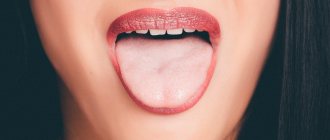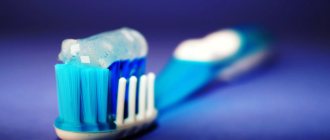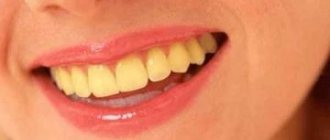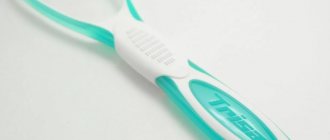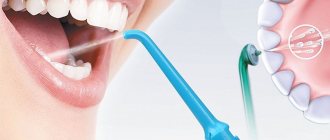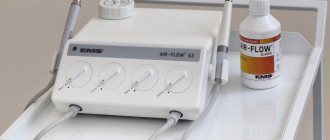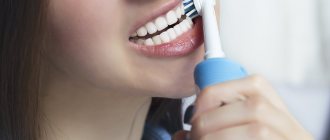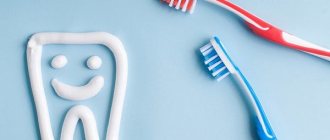Tongue brushing is an important part of oral hygiene and should be cleaned as often as your teeth. On the surface of the tongue there are numerous papillae, dimples and grooves in which microscopic food particles get stuck and bacteria accumulate, so the tongue is most susceptible to plaque. Regular tongue cleaning helps get rid of a huge number of pathogens that cause diseases of the oral cavity and teeth - glossitis, stomatitis, gingivitis, caries, periodontitis, etc.
Cleaning your tongue not only maintains hygiene, but also helps maintain a strong sense of taste. The tongue is responsible for the perception of taste. A pure language perceives it more clearly. You will discover new nuances of taste, and, oddly enough, you may start eating less.
In Ancient China, the nobility used a special tongue scraper before starting a feast. It was believed that cleansing the tongue helps to appreciate the true taste of food.
Did our ancestors clean their tongues?
People began using tongue cleaning devices at least five centuries ago. An example of this is the mention of the need to cleanse this organ of our body in the treatises of the 10th century AD. Uzbek doctor Avicenna. For the most effective procedure, he recommended using cypress cones and tree slivers, which are rich in essential oils. In ancient China, members of the nobility used a tongue scraper to clean their tongues before each meal, as it was believed that thanks to this procedure they could fully appreciate the taste of the dishes. Residents of our country made special scrapers from silver, which disinfected the oral cavity and prevented various inflammations such as mouth ulcers, candidal stomatitis, various types of glossitis, etc.
Causes of plaque
There are several reasons for the appearance of plaque on the tongue: firstly, the physiological process of desquamation of the oral epithelium. Plaque in this case forms in small quantities, but if it is not removed regularly, quite a lot can accumulate. Secondly, these are diseases of the gastrointestinal tract, as well as acute diseases of the upper respiratory tract. If anyone paid attention, then for diseases such as tonsillitis, bronchitis, etc. A large amount of yellowish plaque forms on the root of the tongue.
Regardless of the origin of the plaque on the tongue, it must be cleaned in any case!
Cleaning your tongue with a tongue scraper
Nowadays, tongue scrapers take pride of place in the list of oral hygiene devices. Almost all of them are made of plastic and are a nozzle with a spoon-shaped tip. This excellent tongue and cheek remover needs to be replaced as often as toothbrushes. If you use it together with a rinse aid, the quality of the procedure will be one level higher. You can buy a tongue scraper at a pharmacy or order it from an online store.
Tags
brushing teeth.using toothpaste for teeth.brushing teeth Dental floss Toothbrushes Toothpastes Teeth whitening Dental implantation Dental implantation on teeth cleaning.oral cavity and oral cavity ends oral cavity.oral cavity.oral cavity Dental prosthetics Dental prosthetics Prosthetics at
prostheticstreatmentpricesinformationservicesremovalquestionarticlesandbracescontactsimplantationclinicsreviewschildren'sdatawhiteninghomeevenpersonalorganismtreatmentcorrectlysign upcrownseducationyourourprosthesesdentalveneersproblems
Tongue cleaning spoon
A tongue cleaner is just as great for removing plaque and bad breath as other tongue cleaners. It is a nozzle with a spoon-shaped tip. Using this water-supplying nozzle, you can clean your tongue quite gently and effectively. It is known, for example, that yogis use a wooden spoon or clean their tongue with three fingers wrapped in a clean bandage. You can also use an ordinary teaspoon, but then only for cleaning and, of course, individually.
Clean up!
Soft plaque should be removed every morning, before breakfast, immediately after waking up, and also in the evening, before bed. In addition, during the day you can additionally use a rinse aid (preferably a complex one). It will not only disinfect the oral cavity, but will also reduce the risk of inflammation, and at the same time freshen your breath. It is not necessary for young children to clean their tongue, but from the age of 7–8 years old it is already necessary.
You should start cleaning your tongue after brushing your teeth. The process is carried out with light back-and-forth movements from the root of the tongue to the tip. In this case, you can use special gels and pastes with an antibacterial composition or do without them altogether. However, under no circumstances should you brush your tongue with regular toothpaste - the abrasives and menthol in its composition can irritate the mucous membrane. After brushing, rinse your mouth thoroughly with water. For quality cleaning you need:
Tongue scraper or brush. They come in metal and polymer. The first ones are more expensive and durable, and are easier to sterilize. The second ones are cheaper and softer, but need updating every six months.
An irrigator with a special attachment is a more effective alternative to a scraper. The device carefully cleanses soft tissues with a pulsating jet, which eliminates the possibility of damage to the mucous membrane, providing a brilliant result. You can use disinfectant instead of water.
Are your sweet tooths in danger? Five myths about caries Read more
Tongue scraper brush
Many companies specializing in the manufacture of oral hygiene products offer so-called tongue scrapers. This device is a combination of a brush and a scraper; it has an elongated round shape with soft bristles. Thanks to its flat shape, cleaning the tongue is much easier (does not cause a gag reflex). You can also find brushes on sale that have bristles on one side and special rubber or plastic relief strips on the other.
Healthy and unhealthy coating on the tongue: how to determine
Even in the time of Hippocrates, healers asked patients to stick out their tongues. By assessing the thickness and color of the organ, doctors made conclusions about the state of human health. Centuries have passed, but this method of primary diagnosis is still used by many therapists, dentists, pediatricians, and otolaryngologists.
The plaque itself does not cause disease. It has various causes for its formation: poor hygiene, smoking, dyes in products, diseases of the teeth and oral cavity. If you are healthy, do not be surprised by the appearance of deposits on your tongue in hot weather, in the morning after waking up, or during the day after eating. This is normal and should not cause concern. The pale pink coating has almost no odor, changes color when using coloring products, and is easily removed with proper hygiene.
Pathology is considered to be a very dense coating through which the color of the tongue is not visible. Usually the deposits smell unpleasant, redness and cracks are visible on the surface, and after cleansing the condition of the tongue does not change. Unhealthy plaque can be brown, green, yellow and even black.
Is it possible to clean your tongue with a toothbrush?
Yes, an ordinary toothbrush with a small amount of toothpaste is often used to clean the tongue. In this case, a soft or medium-hard brush will be more suitable for you. To clean your tongue, you can also use a toothbrush with a special surface on the opposite side of the bristles. After you have brushed your teeth and rinsed your mouth, you just need to turn the brush over and start the procedure. Movements should be carried out in the direction from the back of the tongue to its tip. For the procedure, you can use not only a regular toothbrush, but also an electric or ultrasonic one, as well as an irrigator. If you are the owner of one or the other, then you just need to purchase an additional attachment for cleaning your tongue.
Insufficient cleansing of the tongue leads to the development of bacteria, which, in turn, can affect the occurrence of bad breath, diseases such as glossitis, stomatitis, caries, etc. Therefore, it is necessary to remember the hygiene of the entire oral cavity - teeth, gums and tongue.
The appearance of such formations has various reasons and factors.
- Decreased immunity.
- Dental diseases (gingivitis, stomatitis, caries, periodontitis, etc.).
- Infectious diseases.
- Gastrointestinal problems.
- Infection of the body with helminths.
- Pathologies of the heart, lungs, thyroid gland.
- Taking medications, etc.
In difficult cases, when plaque is one of the accompanying symptoms of serious diseases, consult a doctor. The disease must be identified and cured, otherwise no means to improve the microflora will help.
Equipment and hygiene products
When choosing hygiene accessories and compositions, you must be guided by personal preferences. In this case, it is still better to consult a doctor to prevent the negative consequences of seemingly safe care.
Scrapers for cleaning
A flat oval or triangular device looks like a spatula. It is made of silicone, plastic, wood, metal and other materials (the latter are less common). The user delicately cleanses the mucous membranes, preventing tissue injury.
The item does not cause a gag reflex due to its design. Small plastic or silicone bristles gently remove the bacterial layer. The device is quickly and easily washed under the tap.
Spoons
These are elastic nozzles with a tip in the shape of a small spoon. It is enough to run the accessory over the surface several times. Water is supplied through the hole, which makes the procedure more effective and soft.
Irrigator attachments
They come complete with the device and are spade-shaped. When the device is operating, a solution is supplied from the reservoir under high pressure. The liquid reaches hard-to-reach areas that cannot be reached in any other way. Thanks to this, the interdental spaces and gums are cleaned. The pressure mode can be set manually by the user.
This method of cleansing at home is the most effective. As a result, not only accumulated plaque is removed along with pathogenic microorganisms, but also unpleasant breath disappears, the risk of developing dental diseases is reduced, and the enamel brightens.
Brush attachments
In pharmacies and specialty stores you can purchase replacement tips for delicate but effective oral hygiene. As a rule, they combine soft or medium-hard bristles, as well as rubberized elements, which allow you to remove the bacterial layer.
The only inconvenience is the need to change various devices during daily care, since due to the insufficiently rigid structure, the dental units will not be completely cleared of food debris. For convenience, an irrigator is preferable.
What does cleaning the tongue with special brushes give us?
There are multifunctional devices that can be used to reach the base of the organ. They have a textured surface and soft bristles and are maximally adapted to size and shape. The mucous membranes are cleared in a short period of time, the person does not feel any discomfort.
Gels
Such compositions are used in combination with scrapers, spoons and other means. They allow you to soften plaque and eliminate harmful microflora. Using a gel-like mass or balm, tissue healing is accelerated and inflammation is relieved.
Signs and symptoms
Before you find out why you should clean your tongue from plaque in the morning, it is useful to familiarize yourself with the symptoms of healthy and unhealthy plaque.
Healthy plaque can be distinguished without problems. There are certain signs:
Read also: Indoor flowers after purchase
- forms in the morning, after eating;
- eliminated after cleaning;
- changes shade due to coloring with products;
- the linguistic surface is visible through it;
- no foul odor.
Unhealthy plaque can be a symptom of various problems in the body:
- gastrointestinal diseases;
- liver and kidney diseases;
- infections.
Unhealthy plaque occurs due to the use of antibacterial agents.
Signs of abnormalities in the body:
- plaque is difficult to remove even with thorough cleansing;
- there is an unpleasant odor from the mouth;
- very dense plaque, which is actively restored after cleaning;
- regardless of food, the coating has a yellowish or brownish tint;
- there is redness, swelling and cracking of the tongue;
- Nausea, bitter taste in the mouth, intestinal upset.
When the plaque is bright yellow or grayish-yellow, you should pay attention to the gastrointestinal tract - this could be gastritis, peptic ulcer, pancreatitis. And if there is regular and severe heartburn, the plaque will be yellowish-orange in color.
However, it is important not to forget that unhealthy plaque is not always a sign of certain diseases. It occurs due to an incorrect lifestyle: smoking, a large amount of dyes in food, poor hygiene, due to carious lesions and bleeding gums. Cleaning the surface of the tongue with a toothbrush will not solve this situation; you need to contact your dentist to understand how to proceed. He will also explain whether you need to brush your tongue when brushing your teeth.
How to clean
Today there are a large number of different products that make it possible to quickly and effectively clean the oral cavity. These can be tongue scrapers, which are polymer or silicone spoons. Sometimes they may be covered with plastic or rubber bristles.
Also, nozzles on irrigators are used for these purposes. During the procedure, an additional water jet is supplied, which enhances the cleansing effect. In this case, you can use auxiliary compounds. Regular pastes will not work here. To do this, special gels are purchased that can gently and gently remove plaque, while simultaneously carrying out disinfection.
Why does plaque form?
Plaque can accumulate for various reasons. The main ones include:
- decreased immunity;
- untreated oral diseases;
- infections;
- gastrointestinal diseases;
- helminthiasis;
- pathologies of the cardiovascular system;
- respiratory system diseases;
- problems with the thyroid gland;
- fungal infections;
- taking certain medications.
If the immune system is weakened, the body is more susceptible to harmful bacteria.
One of the most common causes of the formation of white plaque is gastrointestinal diseases. As the disease progresses, the plaque becomes grayish or brownish in color. Plaque can accumulate due to fungal infections. Until the source of the damage is eliminated, it will not be possible to get rid of the plaque. A similar thing happens with influenza, whooping cough and other similar diseases. In this case, the following symptoms are added to the plaque:
- enlarged and painful cervical lymph nodes;
- skin rashes;
- redness of the throat;
- enlarged tonsils.
Some foods may change the color of the film on the tongue. Such foods and drinks include beets, ink, strong tea and coffee. This plaque can be removed by regular mouth rinsing. Taking certain medications affects the balance of oral microflora and promotes plaque deposition. For example, this applies to antibiotics. After treatment is completed, deposits stop accumulating on the mucous membrane.

